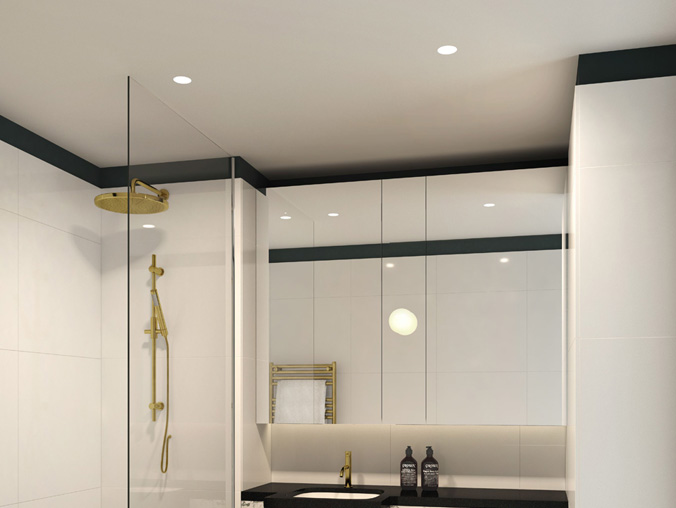

Yes, most Dimmable Downlight LED require a special dimmer switch—this is because LED lights operate on low-voltage DC power, while traditional dimmer switches (designed for incandescent or halogen bulbs) work with high-voltage AC power. Using a non-specialized dimmer switch can cause issues like flickering, inconsistent brightness, overheating, or even damage to the Dimmable Downlight LED over time. However, the type of "special" switch depends on the downlight’s design: smart dimmable downlights may support app/voice control without extra switches, while wired models need compatible LED-specific dimmers. IMIGY’s Explorer Down Lights (a Down Light Kitchen with dimming) and Tulip Down Lights (a versatile Dimmable Downlight LED for living rooms/kitchens) are engineered to work with specific dimmer types, ensuring smooth, safe dimming. Below is a detailed breakdown of requirements and product (compatibility).

1. Why Traditional Dimmer Switches Don’t Work for Dimmable Downlight LED
Traditional dimmer switches (e.g., triac dimmers) rely on "chopping" AC power to reduce brightness—this works for incandescent bulbs (which generate light via heat) but is incompatible with Dimmable Downlight LED:
Voltage Mismatch: LED downlights use internal drivers to convert AC to DC—traditional dimmers disrupt this conversion, causing the driver to malfunction (leading to flickering or dead zones where dimming stops working).
Low Load Issue: LEDs use far less power than incandescent bulbs (e.g., a 10W Dimmable Downlight LED vs. a 60W incandescent). Traditional dimmers require a minimum power load to function—LEDs often fall below this, resulting in unstable dimming.
Heat Risk: Mismatched dimmers can cause the Dimmable Downlight LED’s driver to overheat, shortening its lifespan. For example, using a traditional dimmer with IMIGY’s Explorer Down Lights (a Downlight Adjustable for kitchens) could damage its anti-oil-smoke housing or internal components.
2. Suitable Dimmer Switches for IMIGY’s Dimmable Downlight LED
IMIGY’s Explorer and Tulip series are designed to work with two main types of special dimmer switches, ensuring reliable performance:
a. Explorer Down Lights: LED-Specific Wired Dimmers for Kitchens
As a dedicated Down Light Kitchen, Explorer Down Lights (a Dimmable Downlight LED with 30° adjustability) works best with LED triac dimmers or 0-10V dimmers—both widely available and easy to install:
LED Triac Dimmers: These are the most common for residential use—they’re compatible with most Dimmable Downlight LED and can replace existing traditional dimmers without rewiring. For kitchen countertops, pairing Explorer with an LED triac dimmer lets you adjust brightness from 10% (ambient light) to 100% (task light) smoothly, no flickering.
0-10V Dimmers: For commercial-style kitchens or users wanting precise brightness control, 0-10V dimmers offer linear dimming (no steps between brightness levels). Explorer’s IP54 anti-oil-smoke design pairs well with these dimmers—even in busy kitchens, the dimmer and downlight maintain stable performance. As a Down Lights for Ceiling, Explorer’s standard cutout fits seamlessly with wired dimmer setups.
b. Tulip Down Lights: Smart Dimming + Wired Options for Versatility
Tulip Down Lights (a Dimmable Downlight LED suitable for Downlight Design Living Room and kitchens) offers dual compatibility, catering to different user needs:
Smart Dimming (No Extra Switch): Tulip supports app/voice control via Alexa/Google Home—connect it to a smart hub, and you can dim it directly from your phone or with voice commands (e.g., "Set Tulip to 50% brightness"). This is ideal for open-concept spaces, where you can control kitchen and living room Tulips separately without extra switches.
LED Rotary Dimmers: For users preferring physical switches, Tulip works with LED rotary dimmers (a type of LED-specific dimmer with a dial). These are sleek and fit modern decor—perfect for Downlight Design Living Room setups, where the switch complements Tulip’s minimalist design. As a bonus, Tulip’s 15° adjustability lets you pair dimming with direction changes (e.g., dim to 30% and tilt toward a living room reading nook).
3. Key Tips for Choosing Dimmers for Dimmable Downlight LED
Check Compatibility List: Always refer to the downlight’s manual—IMIGY provides a list of recommended dimmers for Explorer and Tulip (e.g., Lutron LED dimmers, Leviton LED triac dimmers) to avoid mismatches.
Calculate Total Load: Ensure the dimmer’s maximum load (in watts) exceeds the total wattage of all connected Dimmable Downlight LED. For example, if you install 4 Tulip downlights (5W each, total 20W), choose a dimmer rated for at least 20W.
Avoid Mixed Bulb Types: Don’t connect Dimmable Downlight LED and incandescent bulbs to the same dimmer—this causes load imbalance and dimming issues. Stick to all-LED setups for Explorer (kitchen) and Tulip (living room/kitchen).
Dimmable Downlight LED (like IMIGY’s Explorer Down Lights and Tulip Down Lights) do need special dimmer switches—traditional switches cause performance issues and safety risks. Explorer, as a Down Light Kitchen model, pairs with LED triac or 0-10V dimmers for reliable task lighting, while Tulip offers smart dimming (app/voice) and wired options for versatile use in Downlight Design Living Room and kitchens. By choosing the right special dimmer, you ensure smooth brightness adjustment, longer downlight lifespan, and safe operation—whether for kitchen countertops (Explorer’s Downlight Adjustable + dimmer) or living room ambiance (Tulip’s dimming + style). As Down Lights for Ceiling with high-quality drivers, IMIGY’s dimmable downlights deliver consistent performance when paired with compatible switches, proving that the right dimmer is just as important as the downlight itself for a functional, comfortable space.
It is recommended that you upgrade the latest browser
 Chrome
Chrome Firefox
Firefox Edge
Edge